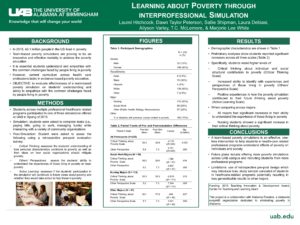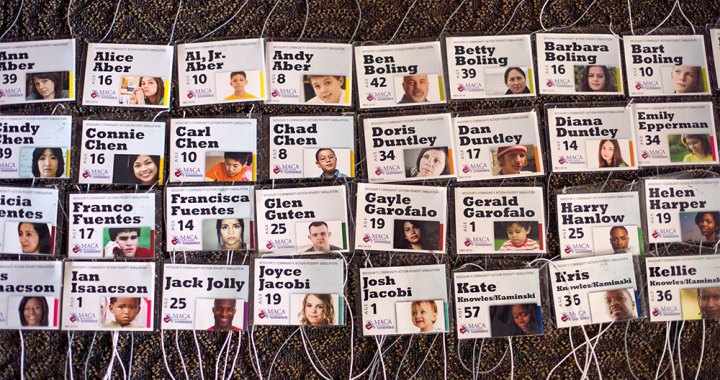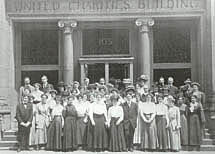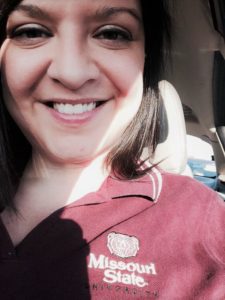Poverty Simulations in Social Work Education
As many of you may already know, simulations are increasingly being incorporated into social work education in various ways (online, in-person, virtual or augmented reality, large-scale, standardized patient, OSCE (Objective structured clinical exams), formative assessment, etc.). In addition, simulations often cover a range of topics such as child welfare home visits, assessment skills, and interprofessional teamwork. The goal of a simulation is to offer students an alternative or mock situation of a real one to meet specific learning outcomes. Reasons for using simulations range from assessing student competency, wanting to offer unique learning experiences to students (i.e., practice assessing for suicidality), and needing to shift instruction to virtual settings (i.e., think moving field hours out of community-based settings).
I have worked on several projects that integrate simulations into our BSW and MSW programs at the University of Alabama at Birmingham (UAB), where I work. One of the most successful has been the use of poverty simulations at our institution. In this blog post, I share why and how we implement poverty simulations, offering guidance for those wanting to add this active learning experience to their curriculum.
Three things I learned at #IPECSpring18
 About two weeks ago, I attended my fourth conference of the spring semester – the 2018 Spring Institute of the Interprofessional Education Collaborative (IPEC) held in Washington, DC from April 30 – May 2, 2018. As I was flying home, I tried to reflect on what I had learned at the IPEC Conference as compared to my other three conferences from the semester. Not surprisingly, I struggled to remember the names and even locations of the other three conferences, including one that I attended in mid-April. Even now as write this post in mid-May, my memories of the IPEC conference are fading. Given all the time, energy, and resources that goes into attending a conference, I wondered about what I was learning at all of these conferences, how it was informing my work as a social work educator; and how I might be able to utilize or share my learning with others.
About two weeks ago, I attended my fourth conference of the spring semester – the 2018 Spring Institute of the Interprofessional Education Collaborative (IPEC) held in Washington, DC from April 30 – May 2, 2018. As I was flying home, I tried to reflect on what I had learned at the IPEC Conference as compared to my other three conferences from the semester. Not surprisingly, I struggled to remember the names and even locations of the other three conferences, including one that I attended in mid-April. Even now as write this post in mid-May, my memories of the IPEC conference are fading. Given all the time, energy, and resources that goes into attending a conference, I wondered about what I was learning at all of these conferences, how it was informing my work as a social work educator; and how I might be able to utilize or share my learning with others.
A quick internet search turned up a few articles about the impact of academic conferences on scientific research, professional development of individual academics, and on disciplines as a whole. A blog post by Donald Nicolson, The last great unknown? The impact of academic conferences, offers a good answer to my own questions and proposed another – How do academic conferences make a difference in the lives of academics and wider society? The short answer is we really don’t know, especially in social work education and practice. Here is a ripe research opportunity for someone with more time and energy than me. I am not looking for another research project, so feel free to let your doctoral students know about this one. I did, however, come up with a solution to my challenge of integrating what I learned at conference into my professional life as a social work educator – I should blog about every conference. Not only will I able to reflect on my conference experiences through the process of writing, blogging also lets me share my thoughts with others adding value (hopefully) for those who couldn’t attend the conference or maybe are interested in a social worker’s perspective on a conference.
So how do I go about blogging about a conference? For a few years now, I have been posting information about my own conference presentations. My structure for these post is to take my original conference session proposal, add copies of the slides or handouts, and include some information about the conference and my co-presenters, and viola, a quick and easy blog post. Here is my most recent conference blog post from the third annual Social Work Distance Education Conference in April 2018. While this is a great way to re-use that conference proposal, these blog posts are not reflective of my own learning nor do they offer professional insight about a conference as a whole. To help me write about academic conferences I went back to the internet and I found this blog post, 12 ways to write a conference blog post by Alison Bolen. She her suggestions for blogging about conferences range from a simple summary of one’s impressions from the conference to sharing a to-do list of actions and ideas that you plan to pursue following the conference. Another of Bolen’s ideas is to discuss one’s personal lessons learned, which resonated with me as the IPEC Conference was all about new ideas for me. So without further ado, here are the three most valuable things I learned about Interprofessional Education (IPE) at #IPECSpring2018:
Know your Social Work History: Pioneering Health Care for Children with Disabilities
A little unknown fact about me – one of my first scholarly interests as a future academic was and still is social welfare history; exploring the roots of the social work profession in the United States. As a doctoral student at the University of Alabama’s (UA) School of Social Work, I was fortunate enough to work with Dr. Paul Stuart, a leading social welfare historian and, now, Professor of Social Work at Florida International University. I took several classes with him about social welfare policy and historical research methodology. Along with being my academic advisor and chair of my dissertation committee, he helped me to develop an interest in how the history of social work profession has a direct and meaningful influence on today’s social workers and social welfare agencies. Through reading and research from my course work, I quickly learned that there was a gap in the social welfare history literature on the intersection of social work and public health in early 20th century in the United States. Using my background in public health and social work, I developed a research topic which turned into my dissertation and the foundation of my interest in social welfare history – the history of health and social services for children with disabilities.
I write all this because I just had a second article published from my dissertation research:
Hitchcock, L. I., & Stuart, P. (2017). Pioneering Health Care for Children with Disabilities: Untold Legacy of the 1916 Polio Epidemic in the United States. Journal of Community Practice. Retrieved from http://www.tandfonline.com/eprint/BDSf39bKsz2ffnn6zMFb/full
The Shared Case Study: An online activity for Interprofessional Teamwork
Natalie Curry, LCSW is a Clinical Instructor at Missouri State University’s (MSU) School of Social Work. She has been on the faculty with MSU for two years and prior to that was an adjunct instructor for MSU, Drury University, and Washington University in St. Louis. Prior to entering academia, her practice background includes working with individuals who were homeless in various capacities, inpatient psychiatric care, and behavioral health consulting in primary care. In this post, she writes about an online, interprofessional learning activity that she helped to develop and implement with colleagues at MSU You can follow Natalie on Twitter at @natalielcsw.
Last fall, there was considerable interest around interprofessional education in the College of Health and Human Services (CHHS) at Missouri State University (MSU), where I work. My colleagues and I believed that we were doing well at talking with our students about how much collaboration they would do in their careers with other healthcare professionals. But we wanted to go further and figure out ways to provide the students real opportunities for interprofessional practice in their educational programs. That was part of the motivation for bringing together faculty from all 11 disciplines (such as social work, nursing, medicine and others) within CHHS, in addition to the University of Missouri-Kansas City School of Pharmacy which was already in partnership with MSU. The other part of motivation was a growing recognition that interprofessional activities were no longer just encouraged in many of our disciplines’ accreditation standards; they were required.
Starting in Fall 2015, our committee to begin developing interprofessional educational activities for our students. We met monthly and eventually decided that it was not feasible to develop one activity, project, or experience that all students from CHHS could do together and still be meaningful. We decided on four “menu items” that each discipline could choose to participate in, depending on the needs of their students. We wanted to have a mix of interprofessional activities, ranging from one-day experiences to projects that could be implemented over the course of a semester.
#APM16 Day 2 – Learning about Poverty through Interprofessional Simulations
 Today I am presenting a poster with Allyson Varley, PhD Student in the UAB School of Public Health and a research/teaching assistant extraordinaire. Our work focuses on why and how we started implementing poverty simulations with students from diverse majors and professional programs across our campus. Poverty simulations are increasingly common in higher education, offering an innovative modality to increase students’ understanding of poverty. The simulation enables participants to view poverty from different angles in an experiential setting. The poster will cover implementation of poverty simulations and present preliminary findings on the learning outcomes for students. Other member of our working group were not able to join us at #APM16, Drs. Dawn Talyor Peterson, Sallie Shipman, Laura Debiasi and Marjorie Lee White.
Today I am presenting a poster with Allyson Varley, PhD Student in the UAB School of Public Health and a research/teaching assistant extraordinaire. Our work focuses on why and how we started implementing poverty simulations with students from diverse majors and professional programs across our campus. Poverty simulations are increasingly common in higher education, offering an innovative modality to increase students’ understanding of poverty. The simulation enables participants to view poverty from different angles in an experiential setting. The poster will cover implementation of poverty simulations and present preliminary findings on the learning outcomes for students. Other member of our working group were not able to join us at #APM16, Drs. Dawn Talyor Peterson, Sallie Shipman, Laura Debiasi and Marjorie Lee White.
Poverty simulations are increasingly common in higher education, offering an innovative modality to increase students’ understanding of poverty. The simulation enables participants to view poverty from different angles in an experiential setting. The poster will cover implementation of poverty simulations and present preliminary findings on the learning outcomes for students.





